Alex Scokel's dev answers and practices blog. Basically a place to write things that won't fit on Twitter.
Don't wanna be here? Send us removal request.
Note
Hello!! I'm over half a decade late but I've been playing POE Deadfire and it quickly became one of my favorite games ever, and especially Serafen is my numero uno 💙🏴☠️ So first of all thank you for the brilliant writing! Secondly, I have a question: like many before me I was disappointed by the lack of dialogue after 1) you kill Malnaj and 2) Furrante is hanged, as they are both major presences in Serafen's arc. Now I assume this is not the intended experience, but I wondered if the writing is actually in the game and it's simply bugged, or if you ran out of time/resources? If so, what would you have liked to implement?
Glad you're enjoying our fine, furry friend.
This'll be a disappointing answer, I'm afraid, but I don't remember, and I don't have access to the files to check. I'm pretty sure I wrote content responding to Malnaj's death (at least under certain circumstances), but I can't remember what might've been there for Furrante.
I would almost certainly approach the way I built what I did for Serafen very differently now than I did back then, just by virtue of the experience I've had since. But I remember that I was working with a lot of structural constraints due to coming onto the project pretty late and also a little underwater reworking the ship/map encounters. I wouldn't change who he WAS - I'm quite happy with how that came out, with the writing and Liam's incredible performance - but I don't doubt that the implementation - the way what's there was structured and presented - could be significantly improved.
<#
11 notes
·
View notes
Note
Hey Alex! I dunno if it was ever asked, and it's some years after the Deadfire's release, but I was wondering - how in detail did you developed Vatnir? I, myself, love to write fanfics. And I was kinda down, when I learnt that Vatnir will not get PID, and romance option (this would be neat!). But in my head, on of my Watchers would love to see if Vatnir would be interested into them. Soo my question is - have you ever thought about Vatnir's sexuality? Is there any headcanon in your.. Well, head?
I'm very death of the author, so the head cannon in my head is just that, head cannon, and no more valid than yours.
I can say that had I been making a romance for him, it wouldn't have been closed to a Watcher based on ancestry or gender. He might've been slower to warm to a Priest of Magran, though (har har).
If it's helpful, I think Vatnir operates under the assumption that nobody's interested in him that way, and he uses his mask and sardonic attitude as shields to avoid finding out. I imagine a confession of the kind would leave him utterly flummoxed, at least at first. He might even be suspicious, assuming an ulterior motive. He's an individual of authority, intelligence, and some charisma, so he's almost certainly been approached in the past, but within his insular community, how could he ever know whether a potential partner's attentions were sincere?
Would he need help navigating these feelings? Probably!
68 notes
·
View notes
Note
This is a very broad question, but you've gone from working on crunchy RPGs (Deadfire) to working on immersive sims at Arkane (Deathloop), so I wonder if you can talk a little bit about the similarities and differences in the approach to writing you have to adopt for the genres?
Sure!
There are a few shifts, and not all of them came with genre. One of the biggest actually came during Deadfire’s development, when we determined that we were going to fully voice the game. In games like Tyranny and the original Pillars, a lot of the dialogue was relatively baroque, often broken up with descriptive text, and usually quite long per node.
This does not work well when everything’s voiced. It’s hard for actors to get their mouths around, and the attention and stamina necessary to go through long lines (and control performance across them) can be difficult to maintain. Meanwhile, as soon as you get into descriptive prose, you’re breaking up what the player’s hearing, separating it from what they’re reading, muddling both. Which is (in part) why you might note that a lot of the Deadfire DLC dialogue tends to be shorter per node than in the base game and use a lot less description.
For me, a major aspect of the shift from Deadfire to "DEATHLOOP” was about tone and style, since the latter aims to be much more modern and widely comic than the Pillars games. It took me a few months to shift gears, to learn to write in the language of “DEATHLOOP”. It was probably the minicom conversations that finally made things click for me, giving me a sense of how far I could push content.
Meanwhile, part of the player fantasy in Deadfire, is creating and embodying your own character, so the goal for the player options is to provide an array of possible responses that allow the player to express their character (AKA roleplay) without shattering the fiction. Colt, on the other hand, is a tightly defined character. There’s a little reactivity in how he responds based on player action, but it’s pretty limited.
There are some significant structural/mechanical differences, however. For instance, we have a lot of crosstalk in “DEATHLOOP”, where characters are speaking at the same time, interrupting and overlapping one another, which is generally not even possible in dialog in the Obsidian RPGs. This requires thinking of scenes a bit more like a screenwriter than an IF writer. Except...
...you have to write most scenes in most immersive sims with the assumption that they can be interrupted at any time. Ideally, the characters then fire a bark appropriate to the interruption (hearing a noise, spotting Colt, or the like). So we spent a lot of time thinking in terms of our systems and how we might create barks that interplay with them in ways that made the world feel more alive. The response of an enemy to seeing the shimmer of an invisible player is different from that of one hearing something explode in the distance.
There’s a little of this in Deadfire, but it’s pretty limited.
In text, we tried to keep the notes in “DEATHLOOP” short(...ish) and provided even shorter summaries that called out the most important info in each document, both because the game doesn’t pause (it’s multiplayer), and because it’s an action game first and foremost. There’s also an... intimacy?... to the perspective of the notes in “DEATHLOOP”. Every note in that game has a reason it exists, a concrete bit of narrative (sometimes shallow or silly, but always present). Fantasy RPGs are a bit more flexible with this; there’s a player assumption that the world is full of books to read that exist primarily to be read by the player. That’s something we wanted to avoid in “DEATHLOOP” (even if it existed to an extent in the Dishonored games).
I’m not going to dig too deeply into the Floaty Words (tm) here, except to say that there’s a little overlap between them and points of interest in Pillars (when you click on a part of the scenery and get a short text description), in that they both exist, at least in part, to deepen and call attention to aspects of the visible game world. Our word count limits on Floaty Words were much tighter than Points of Interest, and the tone much more specific and abstract.
Finally, there’s a fair amount of story that can be told through exploration and the environment in first person that would require text in isometric. We don’t, for instance, have to spend words describing Egor’s bedside bookshelf full of clocks because the player can stick their nose right up against it. We don’t have to describe in text what a pair of Wenjies are doing, because the player is able to watch those characters move around and interact with the environment. That stuff still has to be thought about and implemented, and as a tool it can be both empowering (and immersive) and limiting (every animation costs money). Hope that was informative!
And yes, I’m contractually obligated to style the title “DEATHLOOP” every single time.
(But not really.) <3 <3 <#
42 notes
·
View notes
Text
Entering Narrative Design
I get asked fairly often for advice from people who are interested in getting into narrative in the games industry. Rather than continuing to field each question individually, I figure it’d be more useful to post it where anyone can read it. I’ll also include some links to other worthwhile resources.
Also note that every journey is different. Your mileage may vary regarding any of the advice given below.
More below the cut.

Before I dive into this, a first piece of advice: really think about why you want to do this.
Game dev is often very difficult and stressful, and the pay is rarely great.
Know why you want to pursue narrative design – and consider whether there are other ways you could fulfill those goals.
If, for instance, you want to be a writer, there are many avenues by which you can pursue that dream, especially if you want to be the creative vision behind that writing. (In game dev, you’re often implementing the vision of others.)
I also personally find knowing why I’m doing this work incredibly useful for pushing through the difficult times.
The Very Basics
Wait… what the heck even is a Narrative Designer? Is it just another word for Game Writer?

Writing is generally a subset of Narrative Design (which I’ll abbreviate to ND going forward). Games writer gigs exist and they're often freelance. Honestly I'm not sure where to find them. I think you can search Twitter for "game writer" or the like and probably get some hits. If you're a game writer, that USUALLY means that all you're doing is writing. (Putting words on 'paper.')
Sometimes studios call their NDs "writers," but that's pretty rare in my experience. Even rarer are studios that separate the two into distinct disciplines (ND and Writer). There's a good GDC talk from a few years back that shows how TellTale did exactly that.
In my experience, the vast majority of NDs handle writing and some other systemic methods of handling story. What this means varies drastically from studio to studio and from project to project - and even from designer to designer.
A worthwhile exercise is to play a game (I recommend Fallout New Vegas for this, or Remedy’s Control) and look at all the ways story is being delivered: dialog and quests, sure, but also through faction relationship systems, through the objects and art within any given space, through the shapes of the spaces themselves.
As a follow-up, grab Bethesda's GECK and make a playable level with a quest and narrative elements. Maybe even avoid speakers and notes and focus on telling a story through the design of the space and the placement of art.
You can also use their conversation system to learn how branching dialogs are built (and how reactive dialog is scripted) in Bethesda games of the era.
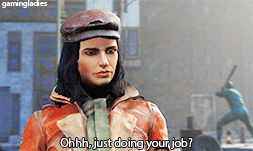
Which leads me to my first major piece of advice:
MAKE STUFF
Specifically, make interactive stuff.
Grab a free tool like Twine (super simple/easy) or Unity (a bit more complex, but the tutorials will help a lot, and if you have any background in programming concepts (which you can also learn online if need be - there are entry level computer science lectures from Harvard and MIT available for free on Youtube), it should be reasonably straightforward). Use your toolset to make stuff that you can show to people.
Keep your scope really small and achievable. A tight, evocative experience of ten to fifteen minutes (play time) that is reactive/branching is much better than something messy or unfinished.
Having created work is a huge leg up over the competition in looking for ND jobs, to the point that it's basically expected at this point. (In part because the barrier of entry to create something is so low.)
There's a lot of reasons for this, including but not limited to: displaying writing chops, displaying an understanding of branching design/interactivity, displaying an ability to complete projects, and good ol' fashioned practice.
One of the reasons that the industry is so focused on credits (or shipped projects) is that they function as proof that you can complete projects – but you don’t have to be on a retail project to make a thing. Nor do you have to do it alone - keep an eye out for game jams you can take part in, for instance.
Meanwhile, run tabletop games (like Dungeons and Dragons, but definitely go further afield as soon as you’re comfortable) for your friends. They’re a far better practice for interactive narrative than writing prose fiction or drama. The instant feedback you get on your choices as a storyteller in tabletop is an incredible teacher of lessons that translate well to videogame development.

Play extensively and widely – and with a critical eye.
By which I don’t mean “be able to talk trash about whatever you play,” but rather “be able to identify some of what the developers are doing with a given project, what it accomplishes, and why you think the devs made the decisions that they did.” (There are a few posts earlier in this blog written with an eye towards developing that skill.)
Practice speaking (with your friends, maybe, or online), preferably with empathy, about things you didn’t think worked in games that you loved or what did work in games you loathed.
Moreover, be confident in talking about things that you feel didn’t work in games that the studios you’re applying at made, and some possibilities for how they may have been improved. Which brings me to…
Learn everything you can about the industry and how development works.
Essentially every industry job interview I’ve ever been in (on either side of the table) has tested for an understanding of game development processes – especially constraints of time and budget. Why wasn’t that thing you didn’t think worked in the game above better? The answer’s usually money or time (which, as the old adage reminds us, are fairly fungible).
You can learn a lot from things like AskAGameDev and any number of YouTube series. (GDC makes a lot of content available for free.) Also articles on https://www.gamedeveloper.com/ . I studied the industry extensively through such resources before I even began interviewing for my first gig, and my understanding of the limitations and difficulties of development were instrumental in me being hired (both for that first job and for the next few jobs that followed - and really probably every job since, but more informed by experience than study as time went on).
A word of warning: work is work. If you join your dream studio, you turn its games into your job. (I’ve done this four times now, so clearly not a strong learner.) It’s worthwhile to identify studios whose games matter to you too much as a player to risk hurting your experience with them by turning them into your profession. Applicable adages advise us not to see how the sausage is made or meet our heroes.
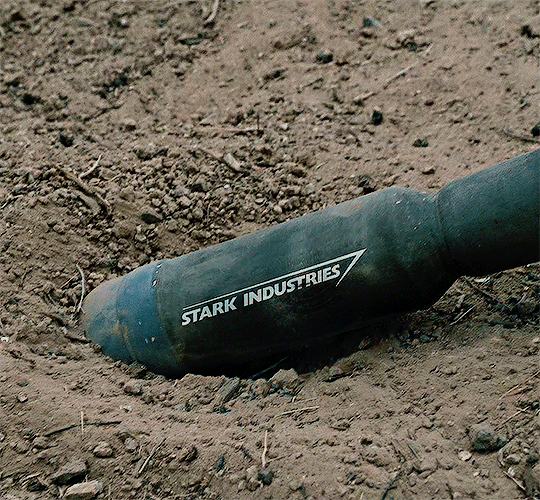
But what about education?
Sooooooooooooooooo, this is a bit of a sticky wicket.
Because little known fact: university is super expensive (at least in the States), and it in no way guarantees employment.
I hesitate to recommend game design programs, especially for undergraduates with no other university experience, doubly especially for people interested in narrative. From what I hear, they seem to tend to favor a kind of wide-spectrum design education rather than encouraging the kind of specialization that helps one stand out in the industry.
Meanwhile, storytelling requires a wide breadth of experience and a strong capacity for research, both of which any number of university tracks can help you gain. And the knowledge gained through most courses of study can be drawn from when creating work.
Instead, I’d advise you to pursue a more general education and really try to live and learn and get to know a wide variety of people while doing so.
Be humble and try to absorb and integrate critique of your work. (It took me an embarrassingly long time to learn this one.)
For diplomas, consider something grounded in liberal arts (literature, history, philosophy) or psychology or politics; ideally this is something you legitimately love, though feel free to hedge your bets by going for something that feels marketable in other industries.
For specific courses, I strongly recommend screenwriting or playwriting (for dialog) and at least basic computer science (for understanding scripting) – though as mentioned above, a lot of learning can be done online. Take history courses if you can, or theatre courses (especially directing). If your university has intro game dev courses that you can take, by all means, do so.
I’d suggest focusing on things that either engage your ability to critically think or require you to make work that then receives feedback.
I majored in literature and theatre, which has served me well, though I wish I’d taken more than a single philosophy course. And gods alive do I wish I’d taken language studies more seriously.
As for graduate education... I don't think my MFA had any significant impact on any role I've gotten, at least not as a piece of paper. The time spent during that program practicing and receiving feedback, on the other hand, had a significant impact on my skill. I don’t think a graduate education is necessarily a waste, but it’s by no means a guarantee of anything. Pursue with care and consideration, and try not to go into debt over it.

And portfolios??
A portfolio probably isn't wildly useful unless it's either interactive (as mentioned above) or directly related to the kind of work the studio is making (in which case you should call that out). Or if it has some significant success in another medium. Like if you've sold a screenplay that won awards at festivals or some such, definitely make that known and accessible to recruiters.
Which is to say, have a portfolio, but make sure it’s relevant and don’t necessarily volunteer it if it’s not asked for. Better, in my opinion, to provide a link to your best single piece of interactive work, or the one that most closely relates to the job you’re applying for.
Once you've got credits, they become a portfolio of sorts. I personally take video of my work being interacted with and include hyperlinks to it in my cover letter when appropriate.
Generally though, the recruiters will judge you primarily on your resumé, and the hiring ND will likely initially judge you on your cover. Both documents should be clear, concise, humble, tailored specifically to the studio and role, and free of spelling and grammatical errors.
But the major hurdle will be the test. Almost any role you apply for will expect you to do some manner of writing or design test, and that's going to be the primary litmus by which you're judged, because it's going to be specific to both the studio and the project that you're applying to.
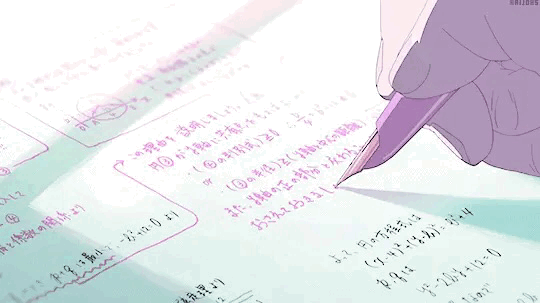
And technical ability???
As an ND or Game Writer, you need zero programming – generally speaking. You certainly don't need to have functional fluency in any programming language.
However, two caveats:
First - technical chops can often help. At the very least, they offer you an edge over other candidates. If I have two great writers applying for a role, and one is clearly more comfortable implementing scripts (in the programming sense of that term) than the other, I'm going to go with them.
Second – a knowledge of CS/programming fundamentals is EXTREMELY useful for any role that isn't pure writing. Your "If/Thens", your "And/Ors" and the like. Your loops and incrementing values and all that basic jazz.
A job on a branching RPG like they make at Obsidian or Bethesda requires that kind of knowledge, even if it seems from the outside to be mostly words on a screen. That's how you get all of that dense reactivity to player action and character background
Most gigs also require some basic level of technical fluency. You need to know how to use Word and Excel, if not Powerpoint. Many studios will have you working within an editor. (Again, Unity’s a free-to-access example.) Almost every studio uses databases for task and bug tracking, and most use versioning software (which can be learned on the job).
I was in QA for roughly five years before I shifted into design, and I used that time to learn everything I could about the various toolsets and processes at the studios I was at. Test (at a dev studio in particular) can be an excellent route to learning a lot about how games are made. However, if you take this route, you need to do good work in QA. Testing can be a path into other things, but if you treat it like a mere stepping stone, you’ll alienate the very people you’re trying to impress and possibly even get a bad reputation within the relatively small industry. Test is an important role that deserves to be taken seriously, both by the people who are doing it and the people elsewhere in the studio that QA supports.

So what do you WANT to make?
My experience in the small indie space has been MUCH more limited than in the AA/AAA scene. It might be easier to get a gig there, but I never have (in design, I mean), so I can't speak to it.
There's also the question of what you want to make. You don't want to be miserable, and it's perfectly possible to be miserable (or making stuff you don't care about) in either space.
I point this out because it seems to me that there's some difficulty shifting lanes, regardless of which lane you start in.
But if you're looking to make big expensive games, I'd start by looking for AAA gigs (keep an eye out for temp/freelance jobs which can be easier to land than full time roles). And keep an eye out for roles in genres that don't seem immediately obvious. Loads of people in ND want to work on a Mass Effect or BioShock or Uncharted. But FIFA games, racing games, MOBAs, and the like have huge AAA budgets and need writing done on them. And I suspect that it's easier to go from writing on Forza to writing on Red Dead than it is from writing on Max Gentleman Sexy Business (although it shouldn't be, because that game's fucking brilliantly written).
At the same time, if you want to make experimental stuff where you have lots of control over what you're making, shoot for indie instead. Expect to wear more hats in indie, though. Expect to need more technical skills.
And don’t forget mobile. It's relatively easy, as I understand it, to get a role in a mobile studio – they aren’t quite as competitive, but they can be rewarding.
Basically, aim for the level you want to work at rather than trying to game the system. There's a lot of ways to "work your way up."
That said, I found https://www.gamedevmap.com/ an invaluable resource for knowing what studios were where. Check out the studios that are geographically comfortable for you and start your search for work with them.

Finding the Right Studio
As I mentioned at the top, making games can be hard.
The pay is generally not great (especially contrasted against the amount of money the industry brings in), the work is stressful, and the schedules can be grueling. This is slowly getting a little better, but for the most part, yeah.
There are, however, things you can do to mitigate the risk of ending up somewhere you’re miserable.
Check Glassdoor on places you get interviews with. It helps to know what your red flags are (or the things you can’t deal with in a work environment) and be on the lookout for those things specifically.
Always ask what the interviewer likes and dislikes about the studio.
And during the interview you can absolutely ask what their crunch practices are like, and you should ask about OT, vacation, and sick and parental leave policies.
Google the studio to see if they've been in the news for harassment/crunch/etc. and what if anything they did to respond to that.
There are studios/publishers I know I won't work for based on their ethical failures. There are others that are in the “avoid if possible” column.
I personally also try to gauge the politics of a studio and factor that in. I consider games incredibly meaningful pieces of media, and I don’t want to work on games that I consider having a net negative impact on the state of the world.
(Though, in fairness, I am fortunate enough to be able to afford to be a little choosey.)
Instability is basically part of the industry, and something you'll almost certainly deal with. And don't be afraid to leave studios that aren't working out (or where you are unhappy working), because churn is expected. I caution you only against leaving multiple studios within a few months of starting.
Keep an eye out for things like non-competes during hiring, and keep in mind that they’re generally negotiable.
Reasonable: you can't work for another studio while you're working for this one (assuming you're full time).
Unreasonable: you can't make personal projects in other media, or you're expected not to work anywhere else within any amount of time after leaving the studio.
NDAs are strict and taken extremely seriously, and I think that this is reasonable.
Some studios, especially large ones, will also try to control your public presentation. That's... reasonable to an extent, but your personal tolerance will vary. So, for me, I don't put my studio name in my Twitter bio or ever represent myself as a representative of the studio or its various corporate overlords, so that my statements aren't construed as statements "by a member of the studio."
I also tend to avoid negativity about games specifically and often other media (though I make occasional exceptions for poor handling of sensitive content). I also have no compunctions about speaking out about harmful work practices at other studios, which I’m aware may end up meaning I won’t get hired at said studios in the unlikely event that I applied there.
People don’t generally want to hire someone who talks a lot of trash publicly about other studios, and they almost never want to hire someone who has been excessively negative about them in the past. (I will probably never get hired by Quantic Dream. Oops!)

This applies outside of games, too. You can’t always know how what you’ve said may impact something later. If, for instance, you’ve spent years railing against, say, Taco Bell’s food, that may become a problem when your studio enters into negotiations to do a licensed strategy RPG about a chihuahua on a quest for the perfect late night snack.
So just, you know, consider whether something negative needs to be said (as in, will saying it help make the world a better place?) before posting it.
And that’s about it. Feel free to drop me a question, and I’ll try to maybe possibly answer it within something approaching a timely manner.
<#
Post script! Paul Kirsch, a fellow designer from my time at Obsidian, chronicled his own journey into development here. Check it out!
20 notes
·
View notes
Note
Hi! I'm working on a Beast of Winter mod lately and I have some questions about Vatnir if you don't mind me asking =) Does his name mean anything in particular? And who gave it to him? Is he attached to certain members of his clan who will inevitably be missed if he leaves with the Watcher? Does he have hobbies, things he enjoys on a daily basis? Sorry for all the questions but I really want him to be in-character as much as possible in the dialogues I'm working on for him =)
I wonder how long ago this was asked (the box doesn't show)...
Apologies for the delay! I haven't logged in for ages.
IIRC, Vatnir's name was one of many suggested by me and discussed by the team. It's been a while, but I seem to recall it being a clear winner.
From whence did I select it, though? I'm afraid that's lost to memory. It seems to be related to the Icelandic word for water. Did I make it up? Maybe. But it's entirely possible I picked it from a list of White that Wends names we'd generated in the past, in which case it could've been made up by any number of people (Carrie, Kate, and Josh all being likely suspects)... though I very clearly remember I once spent almost an entire day specifically generating WtW names for Beast of Winter.
Which is all to say that I don't remember and no longer have access to the documentation to check. Sorry!
11 notes
·
View notes
Note
Okay, this may be a silly question, but I was wondering was there any reasoning for Serafen turning down advances from godlike watcher? I just found it surprising because I don’t think we get any other indication that he finds godlikes off-putting, or that he is particularly superstitious when it comes to them.
Honestly, this was something I was really iffy about including, though it was my idea, and one I ended up championing through ship - I bear sole responsibility for it. Were I working on the game today, I probably would have cut it in favor of something background-specific (a lack of interest in aristocrats, for example, bordering on resentment).
It was important to me to have SOME preference for him, and that’s what made the most sense to me at the time. There were a few reasons for this:
1) It helped illustrate the rarity of and discomfort towards godlikes that exists in the world, doing so in a way that was specific to the player.
2) It addressed a question I’d often wondered, which was ‘do some people in Eora fear intimacy with people whose heads are on fire?’ The answer being, yeah, sometimes.
3) It helped clarify that Serafen’s adoration of Pallegina is not rooted in attraction. He finds her amazing, respects her opinions (sometimes), and seeks her approval, but he doesn’t want to hook up with her. 4) It was another flaw, a bit of inconsistency and hypocrisy within his character. I felt that made him more three-dimensional, more interesting. I think it’s pretty clear that this is a foible about sexuality specifically. He has nothing against godlikes as a whole in any other context. (The godlike companions are likely his favorite members of the party.)
Well, I say that, but it wouldn’t surprise me if there’s some line somewhere where he expresses concern about fire godlikes aboard a ship.

So why would I reconsider it now?
First you’ll note that points 1 and 2 aren’t about Serafen. They’re not really rooted in his background, but in larger cultural concerns. That’s not bad, necessarily - people are strongly influenced by the culture around them - but one of Serafen’s defining traits is how much more he’s influenced by a shipboard life than the cultural norms of land-dwellers.
Second, if I recall correctly, I gave godlike players the option to call Serafen out and talk him into sleeping with them, which was something I was always a bit iffy about. Calling out someone for prejudice and walking them out of it is good. Pressuring someone into engaging in a sexual activity they’re not interested in is... not. I think that rooting Serafen’s prejudice in actual physical differences lands in a weird, difficult-to-thread space between those things, and I’m not perfectly happy with how I did so.
Finally, my feelings are mixed about prejudice in games. Eora is a world with prejudices (though not usually our world’s prejudices), and certainly prejudices (both in favor of and against) are central to the godlike experience, but to what extent do you (as a developer) direct manifestation of that towards the player, a player who may well experience prejudices in their own day to day? (Serafen’s essentially a person who says they respect you and seems super nice, only to blow off a romantic advance because they’re “just not attracted to X people.”) At the same time, there’s a fantasy in talking Serafen into expanding his horizons.
Anyhoo, we’re always learning.
Hope that answered your question.
<3 <3 <#
53 notes
·
View notes
Note
You can tell that it’s True and Accurate by the words “True and Accurate” plastered all over it in a very non-suspicious manner...
Hello! I've been having a blast playing Deadfire recently. I was wondering if you would share your thoughts on the text, "A True and Accurate Account of the Ten's Final Stand," found in the Restricted Section of the Forgotten Sanctum. Is it an incorrect account of the Saint's War by some lazy historian who only heard of the events third hand? An in-universe work of fiction or joke? An out-of-universe joke? A text from an alternate reality? Or is the truth better left in Wael's clutches? Thanks!
Remember where you are and what organization/god runs things there.
41 notes
·
View notes
Text
Point(s) of No Return
I finally got real internet in France, so the first thing I did was purchase Final Fantasy VII Remake.
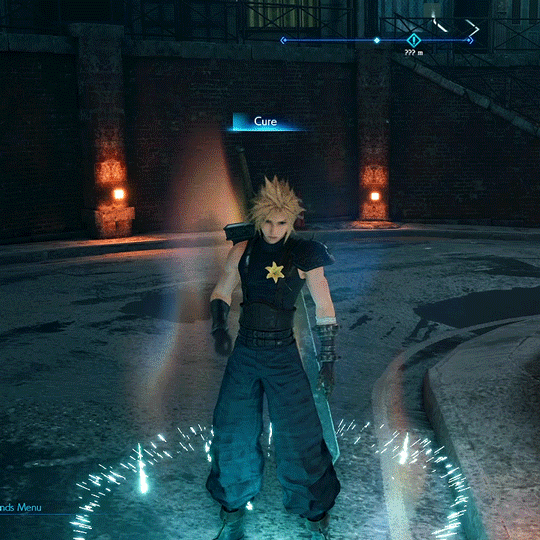
A few days and 10 million Cura spells later, I finished it. (Term used loosely. I got to the credits.)
It’s fantastic in many ways: gorgeous, obviously (I didn’t experience any of the texture issues (beyond some occasional pop-in) that others have complained of); charming and funny; deeply stylish.

I never knew how much I needed more Moulin Rouge in my FFVII.
I’m perfectly comfortable with what the ending did, though I’m not wildly impressed by the execution. And I’m excited for what comes next while holding considerable reservations about how it’ll be handled.
I also found it an incredibly frustrating game in a lot of ways: every time FFVIIR surrenders camera control to the player, for example, you can feel the game’s resentment; there’s a fair amount of repetition of spaces that doesn’t serve the action; while a lot of people seem to like the combat, I found it pretty messy, inconsistent, and frustrating (though loads improved from FFXV), to the point that I turned down the difficulty towards the end just to spend less time fighting battles.
But none of that’s what I’m here to talk about today. I instead want to discuss a suite of specific design decisions that, in my opinion, really hampered the narrative flow of the ending of the game.
SIGNIFICANT SPOILERS under the cut.
Many games, especially RPGs or other games with open worlds, display a confirmation UI or impress upon the player through dialog (or both!) that the player has reached what we’ll be calling a Point of No Return.
Though sometimes awkward to experience, this is a Very Good Thing (tm): it lets the player know that they’re about to depart the meat of the game for its conclusion and that if there’s anything they’d backburnered and want to take care of, now’s the time to do it.
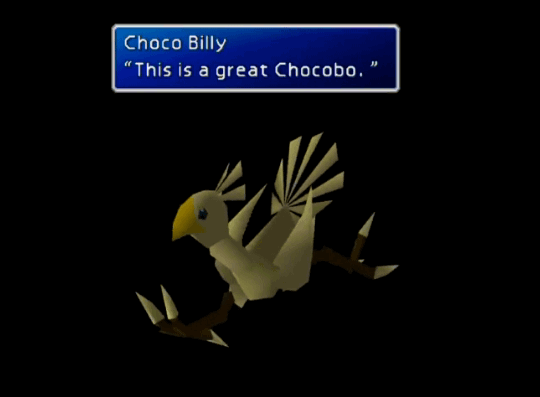
Theoretically, this also allows the developers to pace the ending of their story in a way that builds towards a climax, something that’s otherwise difficult to do in an open world game due to the player’s nigh-complete control over the pace of play.
And while FFVII:R is by no means open world, it has some open world elements, especially towards the end of its second act. It’s no surprise that it fires the expected Point of No Return bulletin.
But later it does so again.
And again.
And again.

The first of these is frustrating for a number of reasons, not least of all its dubious accuracy.
When the characters decide they’ll go after Aerith at the beginning of Chapter 14 (IIRC), the game suggests that doing so will instigate the endgame. This is not true.
What this moment actually serves to highlight are a bevy of new sidequests. Thing is, there should almost certainly NOT be a bunch of new side content dropped on the player at this point. Not because that content is bad (some of it is quite nice), but because the game has just significantly increased the stakes and the pace of its main narrative, and taking time to futz around the slums looking for things to do dramatically undermines that pacing.
I’m not suggesting that this content shouldn’t be there at all - if the player takes time to explore and find sidequests, it’s nice if there’s something there to reward them; otherwise the world might feel empty and unreactive (to the massive tragedy that just occurred). Alternatively, this content could have been placed between (or before) saving Wedge and deciding to go after Aerith (in the period of the game that’s actually focused on the fallout (no pun intended) of the Sector VII Plate).
But having the game beat the player over the head with it right after saying “we’re gonna go storm Shinra now!” (and using Tifa, a character almost as invested in saving Aerith as Cloud, as the mouthpiece to do so) strains character verisimilitude and kicks the legs out from under the story.

But I suppose that’s kinda her bag.
The second Point of No Return comes after returning from, er, the return to the sewers.
This is the actual Point of No Return from the open(ish) world, and the game does a very good job of stating both explicitly through UI and dialog that that’s the case (while going so far as to justify it in the fiction). Had it not been for what came before or after, I’d’ve said “well done” and been on my way.
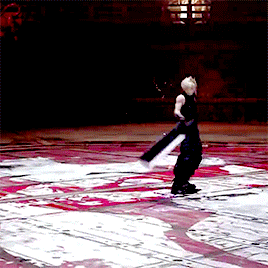
(I could be wrong here - it may be that some of the Chapter 14 sidequests close off after the return to the Sewers, but if that’s so, it doesn’t seem necessary. Certainly one of those sidequests requires the player to do the return to the sewers, making that initial Point of No Return warning misleading.)
The game then progresses into its Final Dungeon, a sequence at turns confounding and at others fun and impressive. A few hours (and sixty flights of stairs) later, Hojo traps you in his lab and makes you jump through hoops to get out. I have a lot of issues with this section in general, the one most germane to this conversation being the obliteration of the pacing. The game has quite literally told the player to “get to the choppa,” but instead throws them through a pretty low-stakes series of trials without much sense of pressure from time.
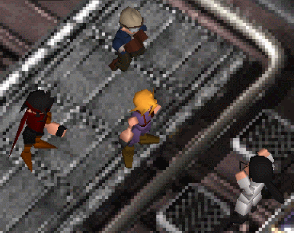
Like this, but forever.
Still, the designers manage a couple of tricks towards the end of this sequence to ramp the energy back up (Red XIII’s fall, the big fight with the blade fish).
Then you hop in the elevator, realize that Jenova’s missing, find a trail of alien goop to follow, and make your way to the exit...
Only to hit Point of No Return #3: This Time, For Reals Though.
I like this one as a teaching example, because it’s very clear what the intention is and how it might tweaked to flow a bit better:
What the devs needed to accomplish, in no particular order:
Let the player know that they’re leaving the more open area of the Shinra Building. (Or possibly just Hojo’s lab... you might not be able to backtrack to the lower floors. If that’s the case, I’d argue for cutting this Point of No Return entirely.)
Set up the encounter with Jenova in the next space.
Raise the tension and the stakes. Jenova is clearly an entity of horror. Horror is about tension.
How FFVIIR approached this in the shipping game:
The player finishes the lab area’s final fight, the two parties are reunited, and they take an elevator to Jenova’s tube in the central lab.
Player finds Jenova missing.
Player locates elevator to Shinra’s office.
Game produces a “Point of No Return,” explicitly telling the player that if there’s anything left to do below, they should go do it.
Player may go looking for new stuff to do (or stuff they left undone), ballooning the time between step 2 and its pay off while dramatically undermining tension.
I’d argue that this flow could have been made dramatically better by setting the point of no return prior to returning to Jenova’s tube.
Like so:
The player finishes the lab area’s final fight, the two parties are reunited, and they find the elevator that will take them up.
The game fires the Point of No Return. This makes a lot of sense narratively, too, because last time the party was up there, Sephiroth was up there, too. (This elevator also goes up or down from this floor - the only elevator in the lab that does so - making it a perfect place in the level to put this kind of choice.)
Player can put off the return upstairs for a time if they want.
Player takes elevator up and finds Jenova missing.
Player takes elevator up to Shinra’s office and 4 pays off without the loss of tension.
BAM!

Anyhoo...
We can play backseat developer all day. I’m sure there were reasons this choice was made the way it was, and I’d be surprised if this exact conversation didn’t happen in someone’s office at some point.
I don’t know what the various moving pieces were that led to the choice that shipped. It’s just not the choice I’d’ve made in a vacuum, because I’m confident in saying that - whatever the decision was made in service to - it harmed the narrative’s pacing.
And that’s something that happens. Development is give and take, and sometimes (often) narrative hangs lower on the priority pole than other things.
The last Point of No Return occurs right before the final boss.
Like the first, I’d argue that this one’s unnecessary. The player’s forced by the level design to pass immediately by the very vending machine the Point of No Return suggests that they use, and there’s nothing else for the player to do in that map prior to confronting the Big Bad. The narrative has made it plenty clear that there’s no telling what’s on the other side of that light.
(I actually thought it was a portal to the ending cinematic and credits prior to seeing the Point of No Return text, and would have been very pleasantly surprised by the twist of facing another challenge. Albeit frustrated said challenge was yet another combat in a system I was entirely over by then.)
An autosave at that point would have protected the player’s experience without interrupting flow.
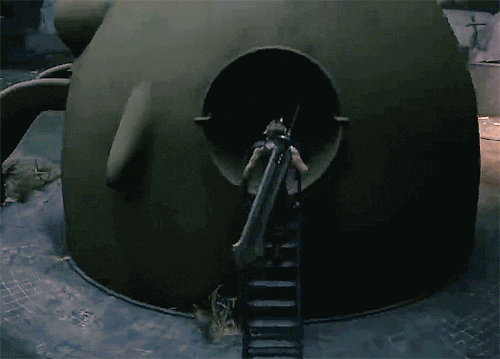
Like whatever hidden trickery moves Cloud from that hole to the top of the slide.
So to bring this to its conclusion:
Points of No Return, while wildly useful, can dramatically interrupt the player experience and undermine narrative tension. They probably shouldn’t be viewed as an opportunity to unlock a bunch of side content, and they should definitely be placed prior to a series of interconnected events rather than in the midst of them.
Until next time, <3 <3 <#
4 notes
·
View notes
Note
You've left Obsidian for a while now and are working on your own projects, so sorry for the Deadfire question! I was curious what's your take on Vatnir's priestly powers. According to the blurb when you select a class, priests' powers, even though mediated by prayers, actually come from their own beliefs. How does that work with Vatnir also being a conman? I don't mean this in a "PLOT HOLE!!!" way, just curious about what your thoughts were when writing and exploring his character.
No worries at all!
It’s been a while since I wrote Vatnir, so it may be that I contradict myself here.
But from what I remember, Vatnir’s not lacking in belief. He knows that Rymrgand is real. He knows he has a personal connection to Rymrgand. The Beast of Winter is in his blood and soul.
He just doesn’t much like Rymrgand very much. Nor does he feel any particular drive to further Rymrgand’s objectives in the world (not that that matters, because Rymrgand always wins in the end - it’s a fatalistic faith). He certainly doesn’t believe in the specific goals of the colony at Harbinger’s Watch, or that the dragon that keeps attacking is some kind of divine avatar.
Vatnir-as-conman has a far more to do with his manipulating his society and its faith than it does with his own beliefs. Vatnir feels owed by the world in general and by Rymrgand in particular, and he’s happy to take advantage of opportunities that allow him to claim some of those residuals.
I imagine Vatnir’s meditation for spells functions similarly. He believes himself owed something by Rymrgand (he’s touched by the god’s frosty hoof! he’s lived the Rymrgandian experience for decades!), so he doesn’t question it when he manifests “divine” powers.
107 notes
·
View notes
Note
Hey Alex! I was just wondering why neither Tayn nor Llengrath offered to join the watcher in their spelunkings of the Forgotten Sanctum. I get that Tayn's a little bit of a coward—he even admits to that, but Llengrath? Was it because of balance reasons, ie the archmages being too powerful? Thanks
Sorry for what I assume was a slow response. I’ve been a bit absent lately, what with, well, everything.
There are a lot of potential answers to this, which all kind of boil down to “that’s not what we wanted to do.”
The best way to have done it would have been to turn one or both of them into a sidekick, and that was out of scope for the project. But that’s assuming we thought it would serve the game, and I’m not sure it would have.
From a narrative perspective, we really wanted to expand on Fassina, and letting one of the archmages accompany the player would have undermined that (both from a resources perspective and a content perspective).
We’d already established, too, that Llengrath was willing to manipulate and cajole others (including the Watcher!) into doing her dirty work.
There’s also an extent to which neither Llengrath nor Tayn would be willing to leave the other unattended.
Finally, it can be very difficult to bring a character like an archmage into the player’s adventure without the player being overshadowed. TheAlexandrian actually pretty recently wrote a post on a similar subject (in the context of tabletop) that I highly recommend.
12 notes
·
View notes
Text
A Lot to Process
I haven’t been making games lately, but that doesn’t mean I’ve not been writing. I took off at the beginning of the year to work on my prose fiction, finished drafting a novel provisionally titled These Subtle Games back in March, and finished revising it and began querying it last month. It’s a contemporary occult fantasy set in Boston, following a nonbinary game developer investigating the untimely and mysterious demise of her mentor, only to find herself drawn into a morass of conspiratorial cabals, mystical mobsters, and misogynist massholes - not to mention a sprawling hidden ARG that may or may not contain the secrets of New England cunning magic.
It’s basically autobiography.
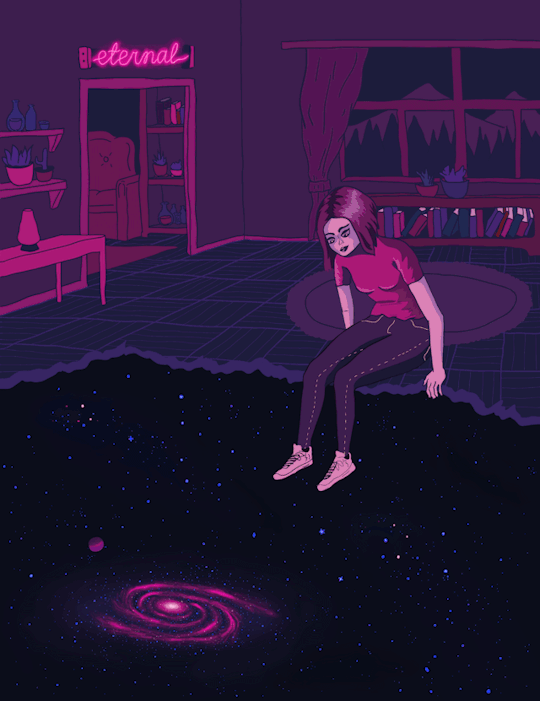
In the meantime, I’ve begun writing a new novel, an industrial fantasy set in a world of sprawling empires both challenged and propped up by powerful mercantile houses and an aggressively expansionist church ruled by wizards. I found that the process I stumbled through in developing and writing These Subtle Games - a process that, despite the differences in media, grew out of my experience creating games - worked really well for me, so I’ve been following a more refined version for the new novel with similarly positive results. Furthermore, I’ve already begun applying it to a potential sequel to TSG. With Novelember coming up, I figured I’d share a little of that process with you.
The goals of my writing process are twofold:
To apply some level of organization to my work, lest it follow in the footsteps of my first novel, which was basically “write until you’re done writing, and now you’ve got 141,000 words of experimental weirdness.”
To allow a lot of flexibility, preventing said organization from stifling my creativity.
Details below the cut.
PRE-PRODUCTION, aka Background, Research, and Planning
I spend a lot of time with the concept for a novel (or a conversation in a game) before I begin writing anything that’ll make it into even the rough draft. Note that I didn’t use the “before I put pen to paper” metaphor here, because I do a lot of writing at this stage. Much of this is simple note-taking, whether on research or on ideas. I do a fair amount of this in an actual notebook, often because I’m off somewhere away from my computer.
Because this phase generally overlaps with the late phases of a previous project, and when I’m actually at my computer I’m generally working on the older piece. I was in this phase for Hidden Sanctum while recording VO for Seeker, Slayer, Survivor, for example, and for These Subtle Games while wrapping up my work on the Deadfire expansions.
I like to overlap projects like this for a few reasons:
It allows me to move smoothly from active work on one project to the next.
It engages a different part of my mind than drafting prose, keeping me fresh.
Because I spend a lot of time exploring an idea, it helps me determine whether or not I think the idea’s strong enough to sustain me through a project.
Things I do while planning:
Read extensively. I read work in the same vein or genre as the work I’m intending to write. In preparation for Deadfire, for example, I read The Gentleman Bastards books by Scott Lynch, Uprooted by Naomi Novik, and Kings of the Wyld by Nicholas Eames. Prior to starting work on These Subtle Games I read Procession of the Dead by Darren Shan, War in Heaven by Charles Williams, Hardboiled Wonderland and the End of the World by Haruki Murakami, Our Lady of Darkness by Fritz Lieber, Conversion by Katherine Howe, the Atlanta Burns books by Chuck Wendig, A Discovery of Witches by Deborah Harkness, and Himself by Jess Kidd, among others. Before beginning the current novel, I read Shadow and Bone by Leigh Bardugo, The Incorruptibles by John Horner Jacobs, Prince of Thieves by Chuck Hogan, and Perdido Street Station by China Miéville, among other works. These are books I read specifically because I planned to do work in similar spaces. I approach these books analytically to get a sense of what’s been done before, as well as what might and might not work from a structural or stylistic standpoint. What I want to do and what I want to avoid. Nor do I limit myself to books. As part of my pre-production for my current project I watched Fullmetal Alchemist: Brotherhood, Les Miserable, L’Empereur de Paris, The Age of Innocence, and Carnival Row, as well as replaying parts of the Dishonored games. I also made myself a music playlist, the heart of which is Postmodern Jukebox’s cover of “Welcome to the Black Parade.”
Research broadly. I’m less of the school that one should write what they know than that they should know what they write. I generally write fantastic works, but without an understanding of matters related to the fantasy, the product feels hollow. This can include research into the history of sail and piracy, for example, or military technology, or fashion. For These Subtle Games I read numerous books on New England folklore and cunning folk, as well as on witch trials, both in Salem and globally. I read a lot about Harvard’s study of psychedelics, including Michael Pollan’s How to Change Your Mind. I also did a tremendous amount of deeply unpleasant research into online harassment. At this point in the process, I try to prioritize the forest for the trees (hence “broadly” above). I don’t need to know every maritime term to plot content set on a sailing vessel, I just need to know the broad strokes of how ships work, how the crew lives, and how that might impact someone living on the sea. My current project required a fair amount of exploration of subjects as diverse as industrial era mill towns, the history of the American and French revolutions, and dinosaurs. While doing this research, I keep an eye out for things I find interesting that can inform my plot. I’d never heard of the Triangle Shirtwaist Factory Fire, for example, but reading about it inspired a plot point in the current project. That said, I don’t feel like I need to be an expert at this stage on anything I hope to write about. I’m almost certainly going to discard ideas and discover new ones as I go along, and I’ll have to dig deep into things like boot styles and fishing vessels (to pick two subjects from yesterday’s writing) as I go.
Figure out what I want to say. Here I work to nail down the broadest themes I want to explore in a work. These usually arise from a combination of my research and reflecting on the things I find interesting about whatever I’m making the subject of my project. Initially These Subtle Games was titled The Quiet Game (a title already claimed by a murder mystery set in Massachusetts) because of its interest in secrets (as reflected in the secret societies of Boston, the NDAs of the games industry, and the arcana of ARGs like the Jejune Institute). The new novel examines colonialism, capitalism, and power, as well as what actions are justified when resisting an overwhelming force. The three DLC for Deadfire interrogate the relationships between the gods of Eora and their followers, the Watcher included. Defining this helps guide all of the work to come, providing a benchmark by which to judge the effectiveness of an idea, plot point, or piece of writing.
Build out the world. These Subtle Games is set in modern Boston and Deadfire in Eora, both worlds that were well-defined long before I began creating fiction set in them. But that doesn’t mean I didn’t spend time fleshing out the corners of those worlds I intended to work within. TSG required that I determine the form of a fictionalized Boston games industry, as well as the shape of the secret cultures that inform the action of the novel. For Deadfire, each piece of content, each world map event, and each DLC island is a little world of its own, with its own story that feeds back into the larger ideas of the game. (Of course, I wasn’t working in a vacuum, nor alone.) The current project, set in a new fantasy world, required the creation of a rough geography and history, populated with peoples, nations, and faiths. I designed these not merely to have verisimilitude, but to feed into the goals of the work. In the case of the new project, that meant huge colonial powers jockeying for the dwindling unclaimed territories and their resources, vast trade companies conspiring to wrest power from the entrenched nobility, a clergy focused on enforcing the rule of the gods over every nation of the world, and several species of magically-crafted servitors provided curtailed rights when they’re afforded any freedom at all. Here, again, I prefer to take a diffuse approach. I can get by with the broad strokes, and leaving things undefined offers me more room to maneuver as I write. I personally also find it useful to gather art references at this stage. I have a folder of illustrations that suggest the mood and style of the world of the new project, for example. For These Subtle Games, I commissioned an illustration of my protagonist from the fantastic Katorius (below).
Sketch out the major characters. Generally by this point I’ve got ideas for at least a few of the characters, but before I start writing I want to have a strong sense of who each of those characters is. I generally write a few pages about the major players, their background, their attitudes, their role in the plot. This is worldbuilding, albeit with a narrowed focus, so the rules above apply: I try to keep things vague and flexible. I knew at this stage, for example, that These Subtle Games protagonist Laurie’s best work friend Meri grew up in California, and that if she lost her job, she might move back. That she was a surfer and played ska were details that came out in the writing. She also grew from being only moral support to providing occasional practical aid to Laurie, as well as coming to rely on Laurie in turn. Similarly, in the current project, the six characters the novel focuses on, something of a band of scoundrels, shifted over the course of development from their sketches. The relationship between two characters who are fugitives from the imperial government, for example, changed dramatically. Whereas they had been initially written as an inseparable pair, I found it much more interesting if they were on the outs after years of traveling and working together, adding (another) fracture in the crew’s interpersonal dynamics. I’ve talked before about how Vatnir went from being a charming con-artist to a grumpy reluctant messiah after I saw concept art for him. Similarly, I knew from my first moments with Serafen that he possesses no qualms about employing violence in the course of his work; the delineations, though, that he creates for himself regarding when violence is appropriate was something developed over the course of writing him.
Identify big tentpole moments. Here’s the first bit of actual plot work. At this point I’ve likely got ideas of notes I absolutely want to hit. I knew, for example, that I wanted Laurie, the protagonist of These Subtle Games, to discover an object late in the novel that redefines her relationship to her uncle and her understanding of his role in the mystery she’s unraveling. Inspired by the Triangle Shirtwaist Factory Fire, I knew I wanted the crew in the new project to be party to the inadvertent destruction of a textile mill, one made all the worse for its owners having locked the workers within. In both cases, these moments speak directly to the ideas I’m exploring in the work. Once I’ve identified a few of my tentpoles, I order them in a way that makes dramatic sense to me, and that gives me not an outline, exactly, but guideposts for the narrative. As mentioned so many times above, the goal is to provide myself guidance, not to hem myself in or nail down every plot point.

Once I’m relatively comfortable with my sense of where I’m taking a work, I begin writing what I call my “plot doc.”
PRE-ALPHA, aka The Plot Doc
I don’t generally outline my work. I go from the extremely rough tentpole step mentioned above into a kind of extremely rough draft I call my plot doc. These provide the skeleton and heart of the novel onto which I can layer the muscle and flesh of actual writing. The plot doc is pretty long - the one for These Subtle Games was 49,000 words, about half the length of the finished novel. The plot doc for the current project weighs in at 31,000 words.
Almost none of these words will end up in the actual book as-is.

I care very little about the state of the writing at this step. Here I’m exploring the plot and the characters, drafting out how they go from tentpole to tentpole, figuring out what in the narrative works and hopefully identifying what doesn’t. I find where I’ve failed to establish needed details in my worldbuilding and further define my characters.
This step actually developed directly from my work in narrative design. Generally I (like many of the narrative designers I know) stub out a branching conversation before writing it, creating a kind of detailed outline (where everything is written with the same lack of polish as the LRs pictured in my post about interjections). This lets us establish the flow of the conversation, plot its structure without having to worry too much about details of style, and hopefully locate any holes or major bugs prior to fleshing out the file. Generally the text in stubs would be difficult to mistake for shippable writing.
I personally find stubbing out conversations useful because I think differently during the mechanical work of structuring files than I do during the artistic work of crafting dialog and prose. I’ve found a similar division of labor incredibly useful when crafting plot. It relieves a lot of the pressure of writing, too. I don’t have to worry about both building a functional plot and writing enticing prose. Because I’m going to be the only person ever reading the plot doc.
(Unless, of course, I do something ridiculous like share pieces of it on my tumblr.)
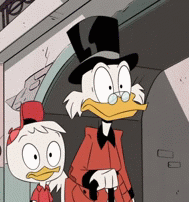
Here’s an excerpt from the plot doc for These Subtle Games, which I’ll contrast with later versions below:
A car awaits her in Gloucester, and it brings her to Matthias’s house. It’s a sizable home, stone, and old, somewhat decrepit, even. Ivy climbs the turrets, and the copper roof has gone to streaked verdigris. He stands in the open door as she approaches, and she hugs him, grateful for the familiar, and he returns the gesture stiffly, patting her lightly on the back. He’s tall and rail thin, built much as she is, with a well-kept beard and receding hair. He feels old-fashioned to her, in a dressing gown and pajamas with warm, soft house shoes.
Hello, niece, he says.
Hello, uncle.
He offers her food, which she declines, and takes her to her room, just off the main room.
Ouch. It’s little more than stream of consciousness, just me getting the ideas out onto the page. Or 200 pages, in the case of this project.
ALPHA, aka The Rough Draft
Once I’ve completed the plot doc, I begin actually writing. I do this in a new file, referring to the plot doc for guidance as I go along. Often I do this a little inconsistently, letting myself write until I hit a lull before returning to the plot doc. That way the plot doc serves not merely a guiding role, but a motivating function.
The rough draft is the first actual composition I’m doing on the work, and much of it actually ends up in the finished version. I take significantly more time on each scene, on each sentence, trying to craft prose that breathes and dialog that feels real.
I also tend to be a bit loose and experimental at this stage. I play around, writing things that I find interesting to read. If I find myself weighing style against readability, I generally err on the side of style. I can clean shit up later.
Here’s the scene from before, taken from the rough draft:
The car Matthias hired lets Laurie off at the gate, which creaks opens on hydraulic pistons as she leaves her tip.
The driver nods towards the tree-lined darkness. “Hop back in, and I’ll run you up. Real door to door service. If you’d like.”
Having relaxed at an exponential rate with each mile she put between herself and the city, Laurie shakes her head with a faint smile. “I could use the walk.”
“You don’t think you’re fat, do you?” His gaze flits the length of her from knees to shoulders, efficiently dispelling the enchantment worked by the commuter rail ride through the dense New England night.
“What? No.”
“Because you’re a beanpole. Almost too skinny, if you ask me.”
She hadn’t. “That’s not what I meant. Just, I want to clear my head, thanks.”
He leaves her to it, and she walks up the curling drive towards the old stone Victorian. The curtained windows glow faintly from within, and warm lamps jut from the quoins. Sprawling ivy climbs the turrets, and rooftop copper has long given way to white-streaked verdigris. Matthias’s is a stately home, but aging, much like the man himself. He meets her at the door in a dressing gown over fine silk pajamas and plush slippers. Her uncle stands as long and lanky as Laurie, with high cheekbones, a higher forehead, and a well-trimmed beard.
She greets him with a hug. She keeps it gentler than she might like, given his age. He’s never appeared frail, exactly, but his features profess a wary delicateness, as if he’d been crafted of pudding cloth and porcelain.
“Niece,” he says quietly, squeezing her shoulder.
“Uncle,” she answers. It’s an old ritual, and with it Laurie’s remaining fear falls away, abandoning her to her exhaustion.
He admits her to the house, the pair padding silently across polished marble past floor-to-ceiling mirrors. Matthias’s home gives the impression of being larger on the inside than the out, a space out of time, populated by statues of stone and painted ceramic. A grand piano dominates one corner, the instrument on which Esme had performed several family recitals during Thanksgiving gatherings past. At thirteen, Laurie’d lugged her hollow-bodied electric through two airports and two more trains to her uncle’s house. After Esme played, Laurie’d produced the guitar and performed a show of her own, all barre and power chords joined to lyrics roundly condemning the evils of industrial capitalism and hypocrisy of American evangelism in terms both suggestive and explicit. The gathered family had clapped politely enough, but she later overheard her father’s sister thank him for leaving the amplifier back in Carrboro.
Esme had told Laurie she’d loved it.
“Are you hungry?” Uncle Matthias asks her as they pass the sliding double doors to the dining room and the kitchen beyond.
She shakes her head. “I’m very full of food, but thank you.”
The scene’s significantly longer now, and I’ve further defined the driver, detailed the house, and defined aspects of Laurie’s relationship to it and her family. And hey, now it’s got quotation marks!
Once I finish the rough draft, I celebrate a bit. Hey, I wrote a fucking novel!

But I don’t share. I know I’m not happy with the work yet. I’m sure it’s riddled with grammatical errors. It’s probably got some questionable shifts in verb tense. It likely sports an inconsistency or six. I know I can do better, so I set out to do so.
BETA, aka The First and Second Revision
Here’s where the hard work of revision begins. I read the book, taking notes on things I’d like to change, then go through carefully, making both the changes I’d noted and performing close editing. I try to polish overwritten lines and clarify confusing sentences. I look for inconsistencies, especially when moving scenes around.
Were this a conversation in a game, this would be the point I marked it for review by a lead or solicit feedback from QA and my fellow designers. Having done a revision or two on a book, I’m feeling pretty confident in what I’ve made, so I give it to any beta readers I’ve enlisted, that they might remind me that I do, in fact, have a long-ass way to go before it’s good.

GOLD, aka The “Finished” Product
Once I’ve got feedback from my readers (and have perhaps let the book sit for a bit to work on pre-production for an upcoming project - or just played a shit-ton of Final Fantasy XIV...), I return to the novel or conversation to polish it further.
At this point I’m looking to flesh out details, to make sure each sentence serves a purpose. To chop off unnecessary phrases and to make sure each interaction is bringing out the characters’ personalities.
Here’s the fourth (and currently final) revision of the scene from above:
Matthias’s hired car deposits Laurie at his gate, a break in the thick stone wall that separates the street from her uncle’s plot of dense, quiet woods. Hickories and pines obscure the sky, swaying gently on a salted breeze off of the Atlantic. As Laurie tips the driver, a pair of heavy, wrought iron hinges creak open with the low hiss of hydraulic pistons.
The man nods towards the tree-lined darkness, his gray hair half-circumscribing his bald pate. “Hop back in, and I’ll run you up. Real door to door service. If you’d like.”
Having relaxed exponentially with each mile she put between herself and the city—a charm cast by the long commuter rail ride through the dense New England night—Laurie shakes her head. “I could use the walk.”
“You don’t think you’re fat, do you?” His gaze flits the length of her, from knees to shoulders, efficiently dispelling the enchantment.
“What? No.”
“Because you’re a beanpole. Almost too skinny, if you ask me.”
“I didn’t.” Her fingernails bite her palms.
“Sure, suit yourself.” His window whispers back into place.
He pulls away, and she waits for his taillights to withdraw around the bend before walking the curled drive towards the old stone Victorian. The curtained windows glow faintly from within, and warm lamps jut from the quoins. Sprawling ivy climbs the turret, and rooftop copper has long given way to white-streaked verdigris. Matthias’s is a stately home but aging, not unlike the man himself. He meets her at the door in a dressing gown over fine silk pajamas and plush slippers. As long and lanky as his niece, Laurie’s uncle’s features add high cheekbones to a higher forehead and a well-trimmed beard.
She greets him with a gentle hug—gentler than she’d prefer, what with his age. He’s never struck her as frail, exactly, but his features profess a wary delicateness, as if he’d been crafted of pudding cloth and porcelain.
“Niece,” he says quietly, squeezing her shoulder.
“Uncle,” she answers. It’s an old ritual, and with it Laurie’s lingering fear falls away, abandoning her to her exhaustion. Her trapezius slackens beneath her uncle’s hand, her scapulae sinking as her frustration flows down her arms and through her twitching fingers. They flick the remnants away.
The pair pad silently across polished marble tiles past floor-to-ceiling mirrors. Matthias’s home gives the impression of being larger on the inside than the out, a space out of time, populated by statues of horses, deer, and dryads in stone and painted ceramic. A grand piano dominates one corner, an instrument on which Esme had performed a series of recitals following Thanksgiving dinners past. At thirteen, Laurie’d lugged her hollow-bodied electric through two airports and two more trains to her uncle’s house. After Esme played, Laurie’d produced the guitar and performed a show of her own, joining steely barre and power chords to lyrics condemning the evils of industrial capitalism and hypocrisy of American evangelism—in terms both suggestive and explicit. The family had clapped politely enough, but later she overheard her father’s sister thank him for leaving the amplifier back in Carrboro.
Esme, of course, had told Laurie she’d loved it. “Maybe my favorite song ever,” she’d said, the liar.
“Are you hungry?” Uncle Matthias asks her as they pass the sliding double doors to the dining room and the kitchen beyond.
Having stopped into a pizza joint on her way to North Station and walked out with a distended Styrofoam clamshell heavy with waffle fries drenched in cheese studded with olives, tomatoes, and jalapenos, she shakes her head. “I’m very full of food, but thank you.”
It’s not hugely different from the rough draft, but there’s a lot more detail, and the weaker phrases have been excised. Matthias no longer “admits her to the house,” for example, because it’s implied that she’s come in by the action. The details at the end about the waffle fries fill an inconsistency in the rough draft: originally Laurie’d eaten nothing that day, so why was she full here? (Deeply interesting, I know.)
Laurie’s decision to snap back at the driver about his unasked for critique of her appearance was a result of beta reader feedback. The additional details about the decor in Matthias’s house subtly ties him to the locations of secret societies Laurie visits later in the book, details I’d not developed until the prior draft. The use of anatomical language to describe Laurie’s body reflects the character’s distance from it. She views it as something of an animate corpse she happens to inhabit rather than a core aspect of her self. Finally, Esme’s response is presented in dialog now, injecting her character into the scene and allowing the prose narration to reflect Laurie’s personality.
Nothing’s really done though. There are more hands for it to go through. Just as a game conversation undergoes changes suggested by QA, shifts in the recording booth, and may end up trimmed or entirely cut due to schedule and budget constraints or even to fix a nasty bug, a novel goes through several hands between the point where the author’s ready to query it and a publisher’s willing to put it on a shelf. But eventually you have to make the decision to be done with a piece, to mark it complete in JIRA and push it down the pipeline.
Then you get to move on to whatever’s next.
Cheers, <#
11 notes
·
View notes
Note
Ahoi Alex! Did you see all the Vatnir fanart? It just doesn't stop :,) What do you think of the icky boy being so popular and smoochable apparently? Hope you have a good day <3
Thanks, you too!
I am curious as to what makes him appeal to people on a smoochable level. I mean, you’re kissing teeth!
I didn’t design his appearance at all - that was mostly Claire Sim, with input, I’m sure, from Brandon Adler and Matt Hansen.
What’s neat to me is that her art impacted my writing of him - he wasn’t nearly as miserable and pained - and, as a result, not as grumpy - until after she’d concepted him. His initial narrative core was as a con man and opportunist, in part to contrast with Xoti’s zeal, Pallegina’s deity-loathing, and Ydwin’s rationalism. Kind of like a revival tent preacher. (His sermon when you meet him was probably the first stuff I wrote for him.)
The extent of his godlike features, as concepted by Claire, heavily impacted his personality and motivation, informing his relationship with his body and with his god. He wasn’t merely someone who was using his status as a godlike to hoodwink a bunch of faithful people, he was someone who believed doing so was his only option - and, honestly, that his god owed him for what he’d suffered.
- <#
28 notes
·
View notes
Audio
This should play during the endgame. If it’s cut, that’s news to me.
obsidian restore this line to the game you cowards, you fools
113 notes
·
View notes
Note
I suspect that the “alignment” of the Circle tends towards Neutral over all; they police their own, but that doesn’t mean there aren’t excesses. (WM displays pretty clearly that Llengrath and Concelhaut are both shitty people. But Llengrath’s pretty ‘reasonable’ during Forgotten Sanctum.)
Side note, I’m not fond of D&D’s alignment system, finding it both reductive and limiting. (”Neutral” is not valuable as a description of an individual’s ethics or goals.)
At some point somewhere, I described the characters in Forgotten Sanctum as: Llengrath: Team Long Term Stability
Tayn: Team Shake Shit Up and See What Happens
Arkemyr: Team Status Quo
Maura: Team Rightfully Royally Pissed
To which I’d add Fyonlecg: Team Screwed Over and Upset About It, But Probably For the Wrong Reasons
Hi Josh. I've been wondering about the Circle of Archmages in Pillars of Eternity. What exactly is the goal or purpose of the circle? It seems to be composed of people who act at crossed purposes. I just don't see how the group would hold together if they have no common goal or purpose. Also a followup question if you have the time, how did the council come to be? And what would you say the alignments of the members would be in D&D terms?
I will not directly answer your question. However, it is not at all uncommon for groups to form under one set of circumstances and subsequently remain together even after completely losing any/all traces of their collective goals or purposes for associating together.
35 notes
·
View notes
Note
Hi Josh. I've been wondering about the Circle of Archmages in Pillars of Eternity. What exactly is the goal or purpose of the circle? It seems to be composed of people who act at crossed purposes. I just don't see how the group would hold together if they have no common goal or purpose. Also a followup question if you have the time, how did the council come to be? And what would you say the alignments of the members would be in D&D terms?
I will not directly answer your question. However, it is not at all uncommon for groups to form under one set of circumstances and subsequently remain together even after completely losing any/all traces of their collective goals or purposes for associating together.
35 notes
·
View notes
Text
Standards Transmission
I’m going to talk a little about bugs. Specifically about how we classify bugs, and the bugs we developers ship our games with.
I’m also going to talk a bit about how I think we, as developers, can mislead players and reviewers about the state of our game prior to launch.
I’m also going to try to convince you not to pre-order games.
Thoughts below the cut.
Games - especially the big, expensive ones - have grown significantly in complexity over the last two decades. If they’re not online, they’re open world. Sometimes they’re both. Fortunately, the proliferation of the internet combined with the tools provided by digital distribution platforms have made fixing issues post-launch significantly easier than back in the pre-PS3 days.
Developers should be able to relax, knowing that not every little issue that ships with a game is part of that game forevermore.
Relax a little, anyway.
Meanwhile, during my time in test it seemed that the console certification standards for games also relaxed significantly between the last generation and this. I suspect this, too, a reaction to the reality that games are easier to patch post-launch.
But if the developers relax their standards and console makers relax their standards, what incentive do the developers have to maintain any standards at all?

We've seen a number of utterly broken launches in recent years. SimCity's infamous release was over five years ago now. Fallout 76's was a few months ago. These games were rightly raked over their coals for their usability issues. But they're also outliers.
I'm more concerned about games like Skyrim, which largely gets a pass on its bugginess as the natural outcome of its scope and complexity, or, to bring it home, Deadfire, which shipped with no small number of bugs. Both games received largely positive critical response.
And here's the thing: when we send games out to reviewers, it's often with a statement along the lines of "this is not the shipping game; There Will be Bugs; we are working to address them."
But that's basically a lie.

By the time we send out a review copy, the build's essentially locked down. We're not changing anything unless the behavior being addressed is so reprehensible as to justify the risk of potentially destabilizing the game right before launch. You hit a lot of crashes or an incomplete critical path quest bug, there's a reasonable chance we'll be trying to address that.
Anything short of that? No chance in hell.
And there’s a lot of bugs short of completely game-breaking that can make playing a game an unpleasant or wildly unfair experience.

When testers submit bugs, they (or a lead, or a producer - this varies wildly between studios) assign said bug a Severity. Studios also have very different standards from one another in how they assign said Severity, but it’ll generally look something like this:
A1 - Crash The game experiences a critical failure and the program ends. May take your computer or console with it.
This can also include things like infinite loading screens, though those can also occur without the game technically crashing.
A2 - Absolute Critical Path Progression Break An issue prevents play from continuing along the primary critical path of the game. This can be an issue with content (level design or art, a system, or a quest or narrative failure) or programming, and may manifest as things like:
Not being able to connect to a necessary server
Not being able to enter play
Not being able to turn in or complete a quest
Not being able to transition into a new scene
Not being able to load a save file
Falling out of the world
Regardless of exactly what happens, the player is going to have to restart the game or reload a previous save in order to progress through the game’s primary experience.
A3 - Progression Break As above, but the player can work around it and continue play, or it impacts a sidequest or some otherwise non-critical content.
B1 - Major Breakage Some system doesn’t function in some significant way. It’s going to be highly visible and will impact most players. Perhaps health packs don’t actually heal, for example. Perhaps the UI falls apart if interacted with in a particular order. Perhaps subtitles don’t function in languages with non-Latin alphabets.
Perhaps the color green displays as yellow. Always.
At many studios, this’ll be classified as an A bug. I personally consider bugs like this unacceptable for ship.
B2 - Breakage Something specific isn’t functioning like it’s supposed to. It could be something wide-ranging like a system (arrows inflicting fire damage instead of physical for example) or art asset (empty barrels don’t have textures on the inside, and thus appear “invisible” from within). Or it could be something specific, like a winch that’s supposed to lower a dumbwaiter simply not working or a piece of art being upside down.
At this level, a bugged aspect of the game is clearly not functioning correctly to any player who understands how it should function, AND that failure of function negatively impacts play, BUT the game experience isn’t entirely destroyed.
C - Issue Nothing’s perfect. We tend to forgive a lot of little problems in the things we experience - when we notice them at all. C bugs might include minor narrative or art inconsistencies, minor framerate drops during a specific encounter, or a strange animation when switching between one weapon type and another.
There can be a few other types of bugs that I’m not going to get into here, such as suggestions, subjective bugs, and the like.
Along with Severity, Bugs tend to be measured along a few other axes called Priority, Reproducibility, and Likelihood. The first represents the import given an issue in comparison to other issues of the same type, the second the probability the issue will occur if the player performs the action that causes it, and the third the chance that any given player will perform the action that causes the issue. Generally, Priority is assigned based on the combination of the bug’s Severity, Reproducibility, and Likelihood. (Which is why a crash might not get fixed - it’s so rare an occurrence that it’s difficult to reproduce and investigate.)

Here’s the thing: the closer that we get to shipping a game, the higher a bug needs to be up that Severity chart to land on a developer’s plate, much less actually get addressed. There comes a point in every project I’ve ever worked on, for example, where remaining C bugs cease to be something we intend to address (for ship). There’s simply not time to make everything entirely perfect, no matter how much we’d like to.
Here’s the other thing: Since any given change to the game has the potential to cause new issues, we developers have to weigh the importance of fixing an issue against the possibility of introducing a new one. Attempting to fix a B bug can result in a far more severe issue.
For example, if a conversation that includes a player dialog option seems to ignore that option, it may be because the alternative didn’t actually get made. Simply cutting that node could break the conversation and, by extension, the quest. Sometimes it’s possible that the entire conversation can be cut without breaking anything, and sometimes that happens. Other times we decide that it’s best to just leave the bug in there. A player experiencing the issue is better than possible alternatives.
A line I really loved in BioShock: Infinite that played between Booker and Liz on the boardwalk simply stopped firing shortly before release. It had been written, recorded by the voice actors, and implemented. It had functioned just fine up until it entirely stopped playing. Chances are, the fix would have been easy. But we didn’t know what the problem was, time was tight, and we determined that avoiding introducing new issues was far better than trying to rescue a line that players would never know they missed.
So the production realities of bugfixing combined with the timing of reviews means that once a developer has sent review copies out, or, for that matter, once they’ve launched an open beta, they’re very close to release. At that point, anything short of an A Severity bug will almost certainly not be addressed for launch.
But that doesn’t stop us from telling reviewers (or Beta players) that “hey, we’re still polishing the game and fixing bugs.”
That misleading statement influences reviews. When I see bugs mentioned in reviews, which isn’t particularly often, it's generally with the caveat that "I was playing on an early build, and the developer has assured me that it will be fixing bugs towards launch."
Sure, many of these bugs will get resolved over the update cycle of a title. But they won't all be. And they definitely won't be at launch.
Because the current calculus is "how not-busted a product can we ship without it hurting our bottom line?"
I think that the industry could stand to have its bottom line hurt on occasion.
We need reviewers to call us out on our bugs. We need players to hold off on buying products - especially products from studios with a reputation for releasing buggy titles - until after they've hit market and been fairly evaluated. If a company is releasing software that's buggy as shit, don't financially support them.
I’ve almost started thinking of major bugs I encounter in games as insults. A publisher or producer determined that this bugged product was good enough for the likes of Alex.
And to be absolutely clear: this is not the fault of QA. QA, assuming they're not woefully understaffed (its own issue), will almost certainly have found, reproduced, and reported the defect you encountered. They're as frustrated that you experienced it as you are. Possibly more.
Nor does fault generally lie with the developer(s) who actually caused the bug. They would likely be all-too-happy (assuming they haven't been worked to the breaking point) to fix the thing that they broke. They got into this gig because they want to make fun, exciting experiences, and nothing's less fun than broken-ass shit.
The fault lies with the money people.

The managers and the publishers. The people who don’t care whether you deserve better because you've accepted everything they've served up so far. The same people who would rather have you spending money on loot crates than experiencing narrative content. Who would rather have you be someone else’s content (and them yours) than actually pay to make content for their players.
And the same people who would rather fire hundreds of developers rather than take a cut in their own pay.
When you've decided that games have become unacceptably broken, they're the ones you have to convince.
You won’t do so by purchasing their games before anyone’s had a chance to play and evaluate them.
<#
12 notes
·
View notes
Text
Jet Lag
I'm back from vacation, but my circadian rhythms certainly aren't.

In the meantime, here's a few design things worth checking out:
Emily Short on developing narrative design skills: https://emshort.blog/2019/01/08/mailbag-self-training-in-narrative-design/
Justin Alexander redesigns the narrative (and some areas) of Waterdeep: Dragon Heist, explaining goals and processes along the way: https://thealexandrian.net/wordpress/41217/roleplaying-games/dragon-heist-remix-part-1-the-villains
Terry Cavanagh on designing the mechanics of the Jester in Dicey Dungeons: http://distractionware.com/blog/2019/02/design-diary-the-jester/
Cheers! <#
4 notes
·
View notes